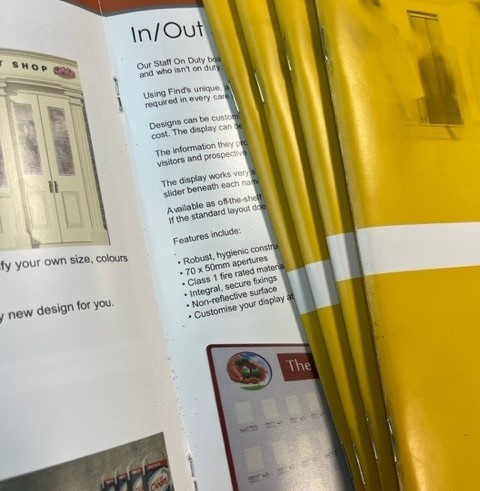Whether you’re printing brochures, catalogues, or magazines, saddle stitched booklets offer a professional look and feel. But what is saddle stitching exactly? And how can it help your business achieve its print-related goals? In this article, we’ll cover what you need to know about saddle stitched booklets and how they are created.
What is saddle stitching?
Saddle stitching is a booklet binding method whereby pages are collated together, folded, and stapled along the spine. For example, artwork is printed as double page spreads and folded in half. The pages are then saddle-stitched (bound with two staples down the spine).
When is saddle stitching used?
The saddle stitch method is most effective for binding booklets and publications with around 8 pages, four pages per spread. Saddle stitch documents need to be built in page multiples of 4 pages (8, 12, 16, etc.) because they are printed on sheets that are folded in half. The maximum number of pages is largely dependent upon the thickness of the paper used to create the book. This is because the staples can only accommodate so many sheets of a given thickness. Too much bulk and a saddle-stitch book will not lie flat it will be inclined to “spring open.”
Is saddle stitching expensive?
Saddle stitching is the most basic, inexpensive, and commonly accepted form of binding for booklets, catalogues, and magazines.
Can you print along the spine of a saddle stitch book?
As the spine of a saddle stitch book is not flat, it is unable to be printed on.
How many staples are used in saddle stitching?
Typically, saddle stitch books are stapled together using two staples situated at equal distances from the top and bottom of the document.
What can be saddle-stitched?
Saddle stitching is perfect for annual reports, magazines, brochures, comic books, newsletters, wall calendars and much more!
To summarise, the main benefits of saddle stitching include:
- It is the least expensive binding method.
- Fast turnaround
- It can be used for short or long production runs.
- This method works very well for low page counts.
- It allows for books to be made in a wide range of sizes.
- Relatively easy to design and can accommodate artwork or images that span two adjacent pages (crossover images).
- Adds minimal bulk or weight to the printing, so it is especially good for pieces that will be mailed.
If you have a project you would like to discuss get in touch for a no obligation chat
Next month read more about perfect binding.
